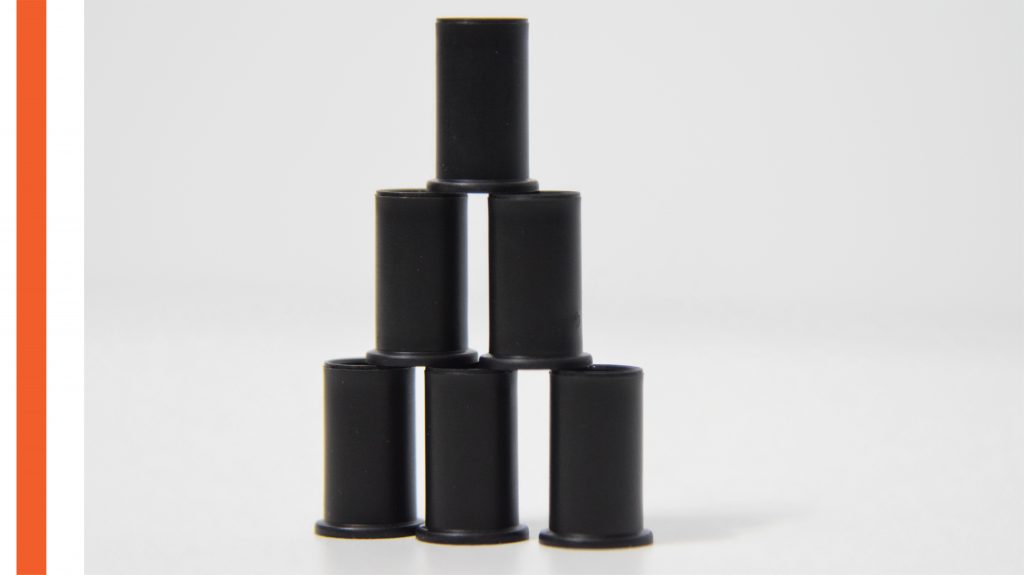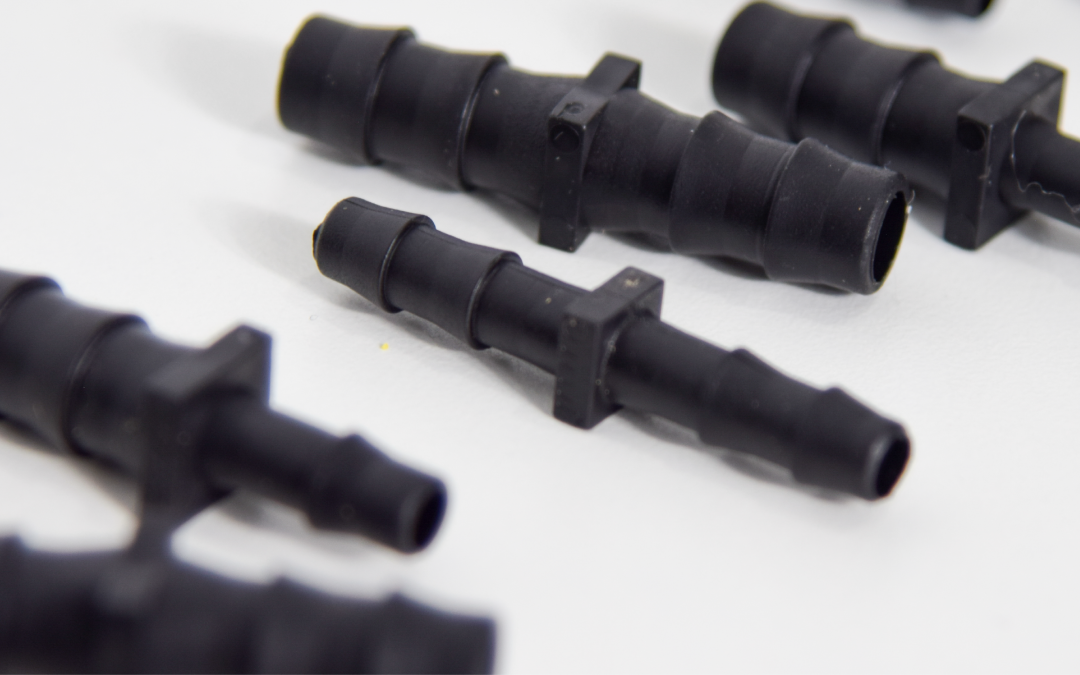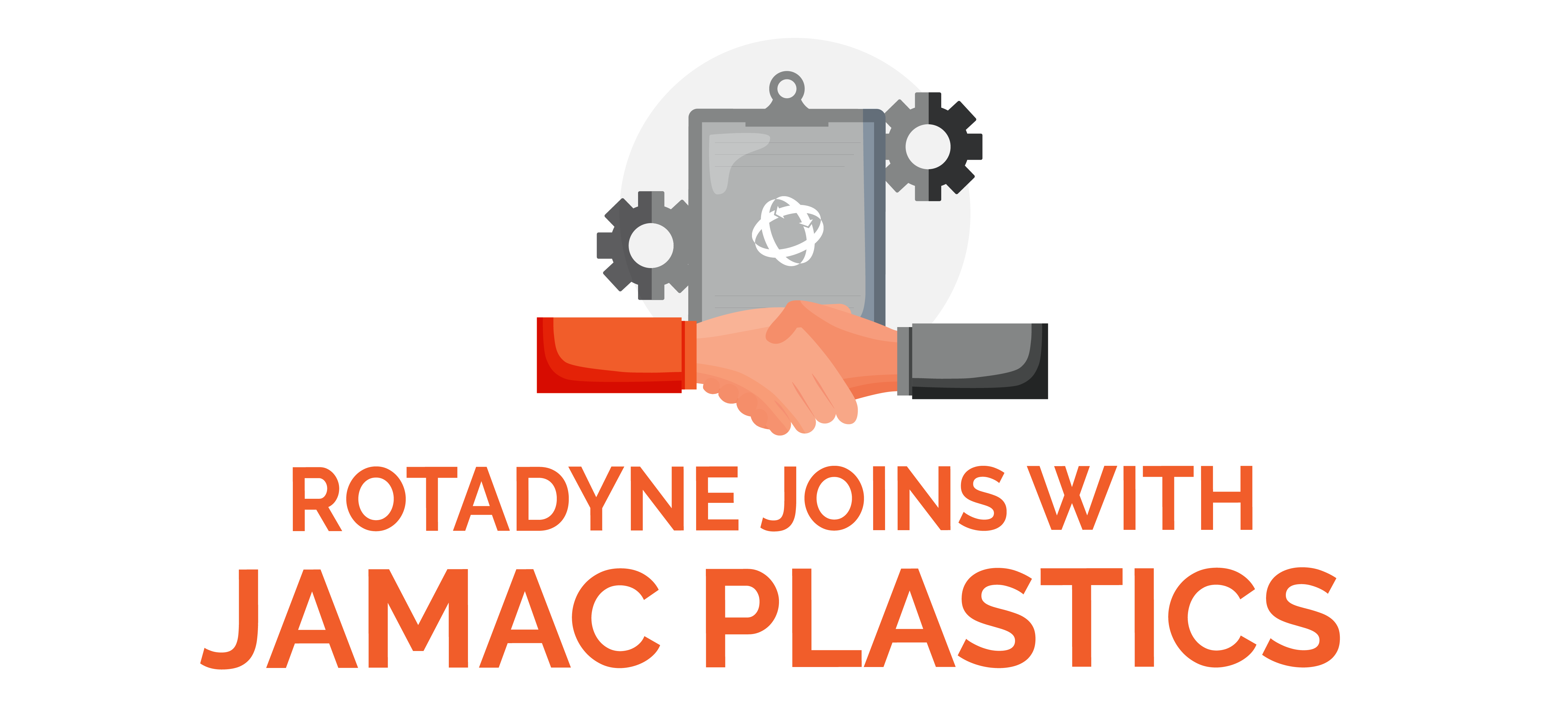
In June of 2021, a union was formed between the perfect, plastic pair.
Rotadyne is always seeking opportunities to expand our capabilities and subsequentially what we can offer our clients in their manufacturing journeys. This is how we stumbled across JAMAC’s advertisement: JAMACS Plastics was offering four injection moulding machines alongside a myriad of ongoing projects, as the company owner Alan McMehan was looking to hang up his boots and finally put over 30 years of plastic manufacturing expertise behind him.
Just like Rotadyne, JAMAC started operating in 1973 during the ‘plastics boom’. We quickly found that there was a lot more our respective companies shared in common, including a passion for quality production, and the value we place in our expertise.
A match made in moulding, JAMAC Plastics and Rotadyne PTY LTD decided to join forces, presenting us with a moulding match made in heaven.
An agreement was reached, and Rotadyne decided to adopt the work and the legacy of JAMAC Plastics. However, the comparative manufacturing approaches, considerations and processes seem to be from whole different worlds.
Unfortunately, it is not as simple as cut and paste. Successfully operating injection moulding machines and being able to optimize moulding and manufacturing components is something which takes years of practice to perfect. 30 years, in fact. Luckily for us, we had Alan to guide us through the beginnings of this process.
“It’s all up in here” says Alan, pointing to his head with a wise smile.
JAMAC
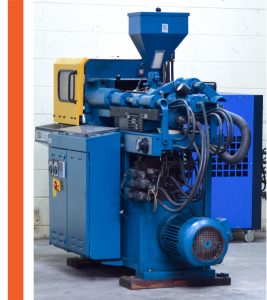
Jamac is an injection moulding company which started operating in 1973. They started their journey with only 2 manually operated old school machines in a small basement room, and eventually grew as they accumulated clients with an international reach.
Alan began working in his father’s manufacturing company when he was 16 years old. He eventually took over the company and continued its steady growth, always striving for high quality production.
There is more to the man than initially meets the eye. Alan is the holder of secrets for all JAMAC operations and facilities. From operating the machines to managing the clients, Alan is a triple-threat in the manufacturing industry.
Today, however, Alan is once again following his fathers’ footsteps, and taking a step back to allow the company, and its legacy, to continue onto its next chapter. Not wanting to disappoint his active clients, or leave behind his beloved machines in a dark, empty factory to collect rust and dust, Alan needed a solution. This is where Rotadyne came into the picture.
Seeking to expend our capabilities and machinery Rotadyne was eager to learn about Alan, JAMAC, and the history which we would be adopting. Finding kinship in hard work, long industry experience, and passion for plastics, this was the perfect match.
CAPABILITIES
Rotadyne’s new capabilities now includes Jamac’s 4 injection moulding machines which proudly reside here at Rotadyne HQ.
Two are from Jamac’s beginnings, Handle Machines which are each from 1974 and 1976. This was at the climax of injection moulding, where mass manufacturing and distribution was a frenzied phenomenon due to the emergence and oncoming dominance of plastic during and after the Second World War.
The machines at this point were still manually operated, as we refer to in our article on the history of moulding processes which you can read here. The other two are Blue Boy 1998 injection moulding machines that have joined our factory. These signify the beginning of the automatic injection moulding area, and are capable of producing eight to ten thousand parts in a single day each. These powerhouse machines may be old, providing an authentic snapshot of manufacturing from over four decades ago, but they are still in great condition, and importantly, in excellent operating order, thanks to the skills and TLC from Alan and his team over the years.
“They’re pretty technical these ones”
– Alan McMechan, 2021.
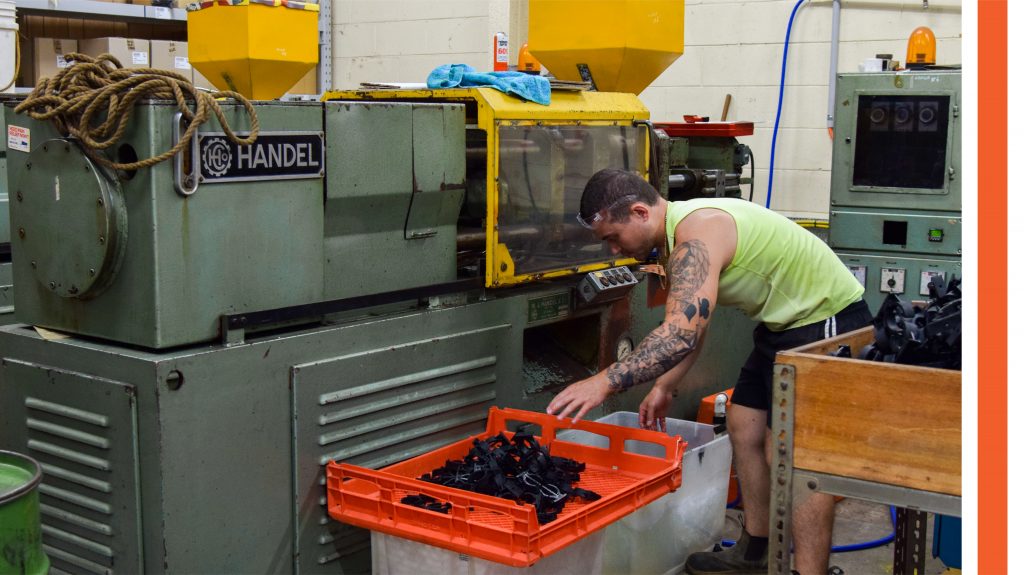
The machines use plastic pellets instead of powder – which may be the industry standard, but is definitely something new for our powder-accustomed workers. A benefit of injection moulding is a zero-waste advantage with a 25% re-chop rate. This means some of our pellets are generated in-house using rejected, failed or scrap plastics which are re-dried and re-grinded.
Moulds can produce anything up to 50mms. Taking an average of twenty-one seconds to complete one cycle, which produces four pieces at a time, these machines provide a feature of instant gratification not afforded by our slower, rotating beasts.
To simplify it, that’s 24 pieces every minute, or 1440 pieces in just an hour!
Some of these considerations are vast, others more straight-forward. They can include clamp pressure, injection speed, injection velocity, material dosage, timing for holding and injecting, and more. These are intricately aligned to melt, mould and solidify each perfectly uniform part in short increments.
Additionally, the manual machines require hands-on action to turn the levers which push and pull the machine parts to function the moulds. Should anything go poorly, the machine will automatically stop operations after 26 seconds.
“I’ve only did it once in my 30 years…. you just have to muck around with it a bit.”
– Alan McMechan, 2021.
While this is clearly not a common event for our experts at Jamac, it is something us newbies at Rotadyne are definitely wary of. On the manual machines, it is also important to ensure the moulds are perfect aligned as they clamp shut, or the mould can get clogged or damaged.
Perhaps only one minor mishap in 30 years will be a hard record to beat, but thanks to the amazing instructions and expertise passed down from Alan to our own workers, as well as the optimal condition of the machines themselves, we are confident we can live up to the legacy which comes with JAMAC’s outstanding reputation and success!
A NEW HORIZON FOR ROTADYNE
Newly adopted skills and capabilities comes a new range of possibilities for manufacturing solutions, and facilitates the sourcing of manufacturing services. Rotadyne is increasingly becoming a one-stop-shop for design and manufacturing, with multiple processes now available under one roof.
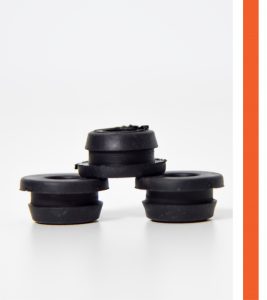
Injection moulding expands the possibilities for what Rotadyne can offer to clients. Whether that includes the production of smaller parts at high volume, or whether it is used in complimentary manners for product components, injection moulding certainly offers us a larger infinity of customization and imagination.
The collaboration between Alan, as a wealth of industry knowledge and experience, with Rotadyne’s production foundations and history with development and adaptation, this partnership will truly set our sights for the stars.
Injection moulding for JAMAC has mostly included heating applications within the pool and spa industry, however they have also produced electrical components, parts for clothing applications and even jewelry boxes.
Rotadyne will continue all active productions and are also hoping to take on new projects, particularly those which call for innovation and worldly impact, or which require an assortment of manufacturing techniques and methodologies to complete.
Our arsenal of capabilities expands with each year, providing us confidence that we will not only adapt to this undertaking of responsibilities, but also thrive with the plethora of opportunities injection moulding offers us as a business and as designers and engineers.
CONCLUSION
Whilst we may be rotational moulders at heart, we love all sorts of moulds, rotational or otherwise. This is the beginning of us embrace the diversity within the plastic industry, which offers us incomparable flexibility and customisation in design like no other manufacturing process or material does.
Follow us on our social media pages to monitor our journey, progress and achievements in the new and exciting world of injection moulding.
